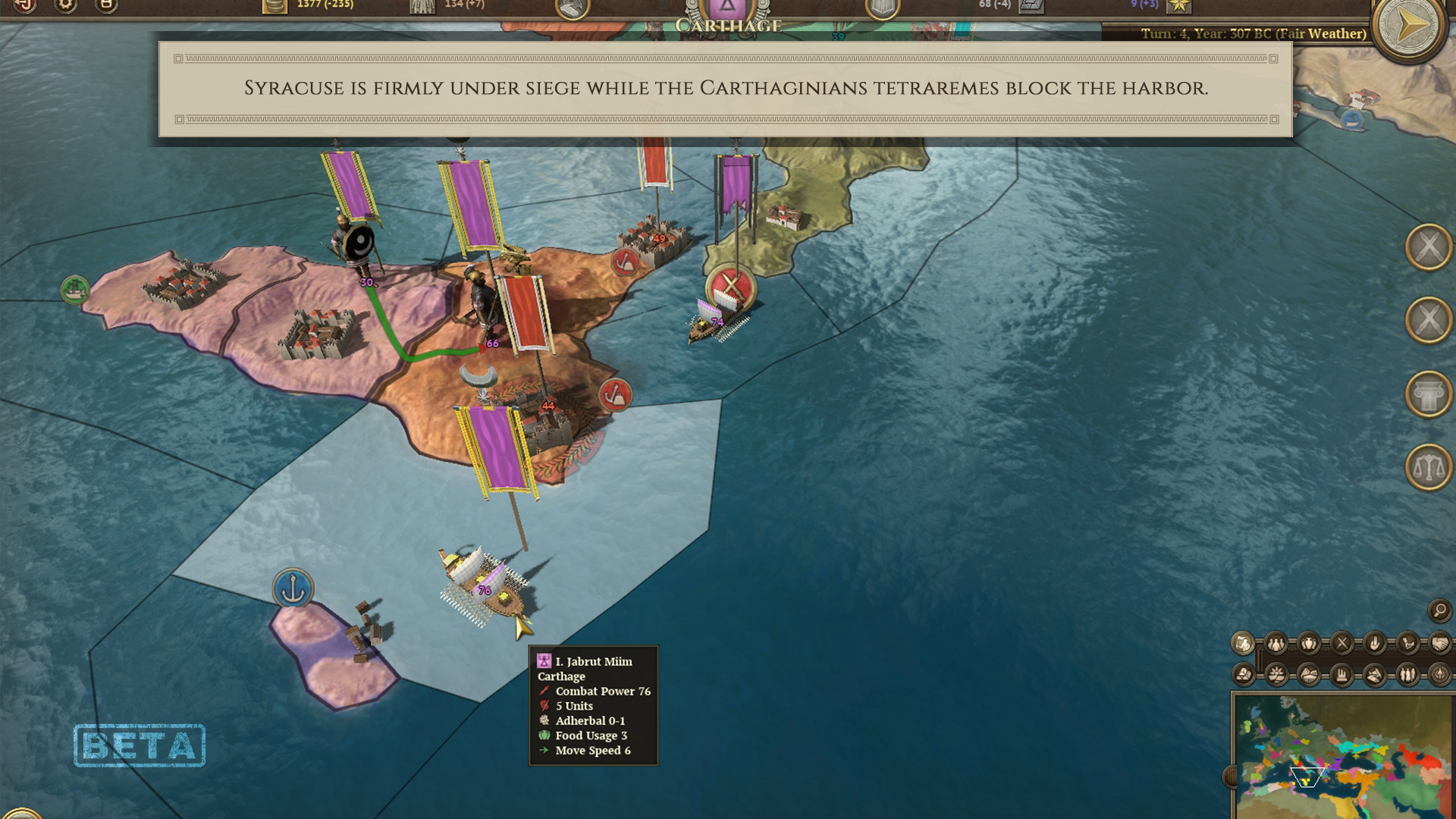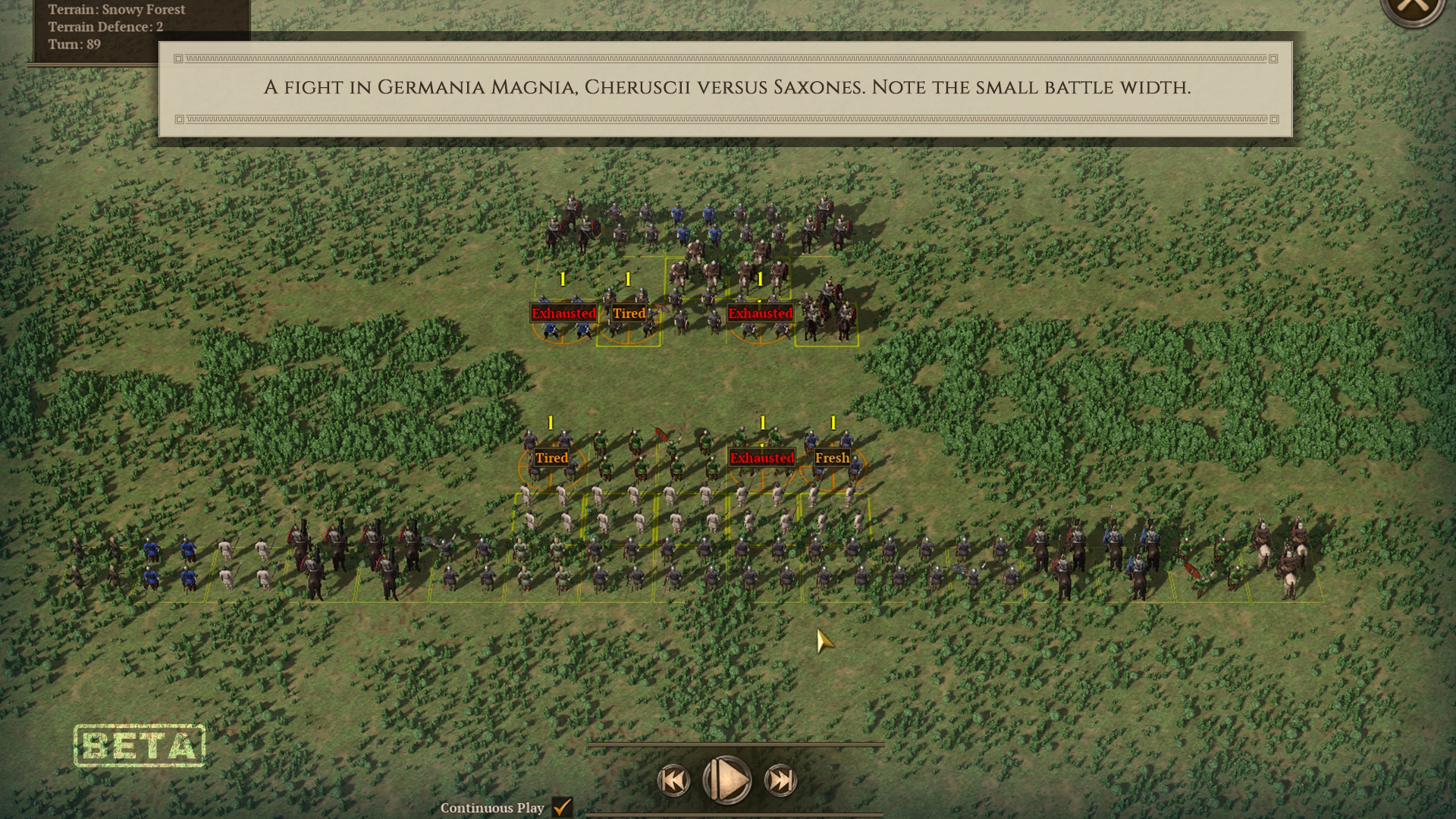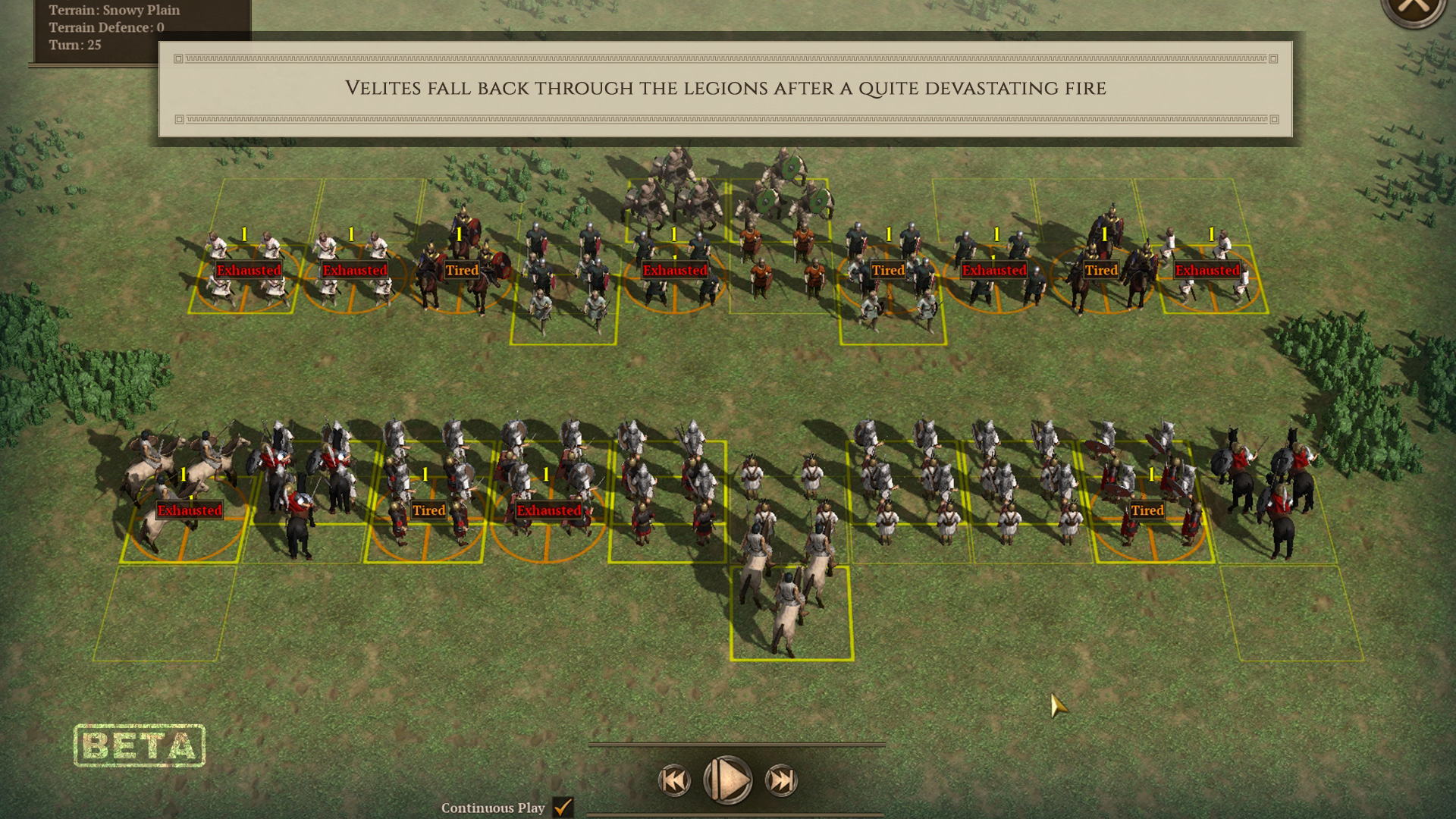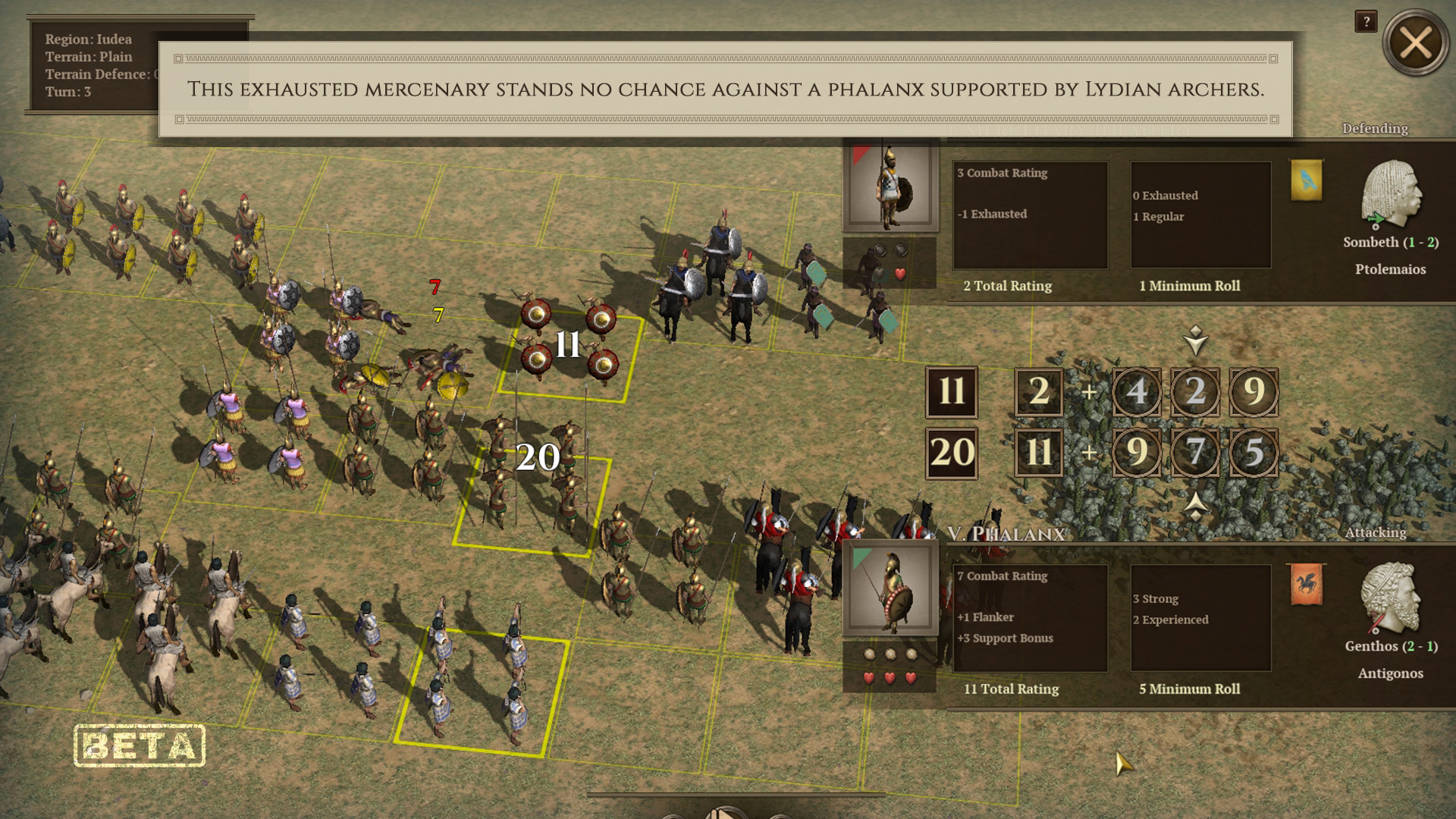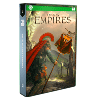Warfare in Empires
One of the major components of Empires is waging wars. Ultimately, you will win if you gain more Legacy than any other nation, but conquering your objectives and holding rich regions, some with world wonders, is definitely the most straightforward way to achieve that.
Once you have defined the objectives for your military campaigns, you’ll have to assemble your units into armies. And this process is not something to do at random, because, as you all know, battles are often won before they are actually fought.
This was one of our design goals in Empires. To have the players enjoy a bit of ‘theory crafting’, by thinking what the force composition is needed to secure your goals as efficiently as possible. We tried hard, and we believe have succeeded for the most part, in having no unit that excels at everything. Sure, if your economy is ten time as strong as your opponent, then you can probably drown him under the sheer number of your legions, to cite one of the best units of the game. But even legions have weaknesses, like not fighting that well in forests and mountains, and being pretty costly, both to recruit and maintain.
So how does it work, in a situation where you have a decent economy, but need to recruit a powerful force to defeat your enemy? You’ll have first to identify if your opponent’s strongholds are in difficult terrain or not. If yes, then the heavier units might not fight much better than the lighter ones, while being much more costly (so if you are not careful you may end up using an expensive, inefficient, army that is outnumbered, and out-classed by your opponent’s cheaper troops). If he has large walled cities, then again, some units will perform much better. You’ll also want to combine your powerful melee units with support units, as these weaker units are essential when the actual battle starts. For example, your army might be cut into shred by weaker infantry, if they benefit from skirmishers or archers in the support line and you lack these lighter troops. Then you have cavalry units. On the strategic map, they are very fast and will allow you to do all sort of things, like acting as a fire brigade, or snatching an enemy region then pillaging it. In the tactical battle, some cavalry on the flanks (or in reserve) will go a long way in winning a battle, and if this does happen then their ability to pursue will greatly inflate the losses of your defeated opponent.
Then there is the matter of the navy. Never move unescorted your units through a sea, as this is a sure recipe for a disaster if they are intercepted. Losing precious and costly phalanxes, when their transports are sunk by humble light warships really is a waste of good men. Ships will also be almost mandatory to conduct successful sieges against cities with harbors. Don’t think you can starve a garrison that has the backup of an unblockaded harbor.
It is also said that an army marches on it’s stomach. This is quite true in Empires. Supply will be given automatically to units from adjacent friendly regions, but beyond that, if you don’t maintain your supply lines, then your units will weaken over time and will be of no use. Equally a large army in a poor region, or where the land is already pillaged, will suffer supply shortages.
But without further ado, on to battle! Once two enemy armies meet in a given region, a battle will ensue, unless if one side has retreated behind the walls of a city (in this case there will be a siege, with a possible assault, at the besieger’s initiative). The first important factor is the terrain. Terrain has two main effects in battles: how much they provide in defense, simulating that the defender had some time to set up and prepare positions; and, what is the frontage, or battle width for the following combat. Frontage is a concept known by veterans of the AGEOD games and is very important in battles. Depending if you have enough troops to fill the battleline or not, the battle will shape very differently. For example if you are fighting in a forest, then the frontage is 6 in fair weather and 5 in harsh weather. If your army has 12 or more units, then your deployment will be optimal, as 6 can fill the front rank and 6 will provide support to the melee.
Now imagine you get caught in the open field, like a plain, a steppe. Frontage here is 12. Your army of 12 units will deploy in its entirety in the frontline! Imagine your archers and slingers to the front having to fight a melee with better equipped troops … Chances are that, unless the opponent is not too numerous, you’ll be beaten.
But frontage provides another interesting benefit to how the game plays. It really reduces the effect of ‘death stacks’, i.e. stacks that can overwhelm their enemy through sheer numbers. Because once you have filled your battle line, the rest of your army will be in reserve, and will only fight if there is a draw when they can replace weakened units in a subsequent round. Otherwise, they will do nothing (apart from cost you money and supplies). Think of the Thermopylae battle in 480 BCE as the perfect illustration of a very low frontage situation…
So our armies are setup, with melee units to the front and supporting units behind them. The very first phase of battle will be the ranged phase, where each unit capable of ranged attack will do so (the others will only throw insults at the other side). As a cosmetic enhancement, the skirmishers will appear to the front of the melee units, perform their attack and then retreat through the frontline to their final position at the back. That’s cosmetic, but it’s nice to watch! Seeing a line of legionnaires throwing their pilum, while the Velites to their front harass the enemy, and then fall back through the cohorts, is quite pleasing for the would-be Imperator.
Then the main phase will begin, the melee phase. There will be a series of duels, between each melee combatant of each side. If one side has extra units (because he is more numerous than the opponent), then flanking attacks happen to the unlucky wing of the enemy.
The battle system is an example of the Triangle Rule. The Triangle Rule is the very core design element of all battles. We thought hard to have a system where winning was not simply the matter of maximizing a given parameter and forcing your way to victory by exploiting this aspect. It had to be subtler. We want the player to balance and consider three things at once (so the Triangle Rule…):
- How powerful a unit is;
- How experienced and what is its current fighting condition; and,
- How good is the general in charge
For us, it was very important that none of these 3 aspects outweigh the others. Said differently, you must design your armies and conduct war in such way that each of these 3 criteria are the best possible, knowing that having ‘only’ one of them as very good will not compensate for the others.
So back to our duels. The aim is to achieve the highest possible duel score. This score comes from two things: the total combat value of the unit, and the dice rolled.
The total combat value of the unit is made of the base combat strength of the unit. For example, a medium warband will have 3, a legion 5 (well, there are 3 generations of legion, so I’m speaking of the pre-Marian one here), and a phalanx 7 in attack but only 5 in defense (most units behave differently in attack and defense). Note also that this value by itself might have been modified by the terrain. A legion fighting in wood would be worth only 3, like, for example, a mundane medium infantry.
To this value is added the support value, between 1 and 3. The best support units are the Archers (but they are rare for most nations, costly and have no extra abilities). Many skirmishers will provide a value of 2, and the simple fact of having another friendly unit as a support (even another melee unit) will provide a 1. So, as you see, having superior numbers is important, but having a similar ratio of melee and support units is more important (although the melee units are more likely to be lost in combat so you need some replacements for them, even if you are victorious).
This combination of factors will tend to produce a value between 2 to 8, in most cases. Now for the second part, the dice rolls. That’s where the two other sides of our ‘Triangle’ kick-in…
Each unit will add up his best dice (ten-sided dice) to his combat value. And a unit will get one dice roll plus one per rating of the general in charge. This rating varies from 0 to 2 (again generals have attack and defence scores and will use this is appropriate if they are leading the attacking or defending army). So the best general would be a 2-2 general, with this possibly modified by an appropriate trait (many Generals are better – or worse – in certain circumstances …). Now there is an added twist to the formula, and this is where unit experience and effectiveness (a combination of fatigue and morale) comes in to play, the third and last facet of our Triangle rule.
From all the dice you roll, between one and three depending, each one is re-rolled until at least a minimum value is reached. And this minimum value is given by the sum of your experience and effectiveness! Let’s take an example. A veteran German warband has level 2 of experience and has an effectiveness of 3. It means that you are guaranteed that each of your dice roll is at least a 5! If now you have a good general, like a rating 2 general, then you get to roll 3 die, and you take the best. Chances are that the ‘random part’ of the duel will be from 8 to 10 reliably! Then this random part is added to our final combat value, and you get our final duel score.
And that’s how you can end up with Germanic warbands fighting in forest with a competent general soundly beating Imperial Legions led by a complacent and not that skilled Consul.
Although this appears to be an extreme case, be assured that if you understand and play with the system, you’ll be able to achieve your goals much more easily, and with much less resources committed. And sometimes, in single player against the AI or in PBEM against live opponents, this will definitely be the difference between victory and defeat.
There are others features for battles that play an important role too. For example flanking units, if your opponent is unable to fill out (or if you have destroyed some of his units in the early duels) all the line will play a significant role. Skirmishers will fatigue their opponent, even if they get defeated. Cavalry can evade some damage if they fight slower units. Now combine several traits in one, and you end up with units like Horse Archers, in the Parthian or Nomad style, that add insult to injury by hitting you with arrows while avoiding most damage in return. So your powerful legions are vulnerable to particular opponents in the terrain where they, this time, have all the advantages.
We think, and our beta testers do too, that Empire’s battles are quite fun while being involved, with some real thinking to do if you like to fine tune your armies (and if not, that’s ok too, but it will be prudent to play against an easy AI until you learn the ropes of the system, as the AI can be quite relentless). But there is more, as you probably know. Most of the battles of Empires can be alternatively played in Field of Glory II, as fully developed tactical battles and the result will be ported back into Empires once you are done. And there is no need for any DLC from FOG2 to get all the possible units from Empires. So … best of both worlds?



 Cart (0)
Cart (0)